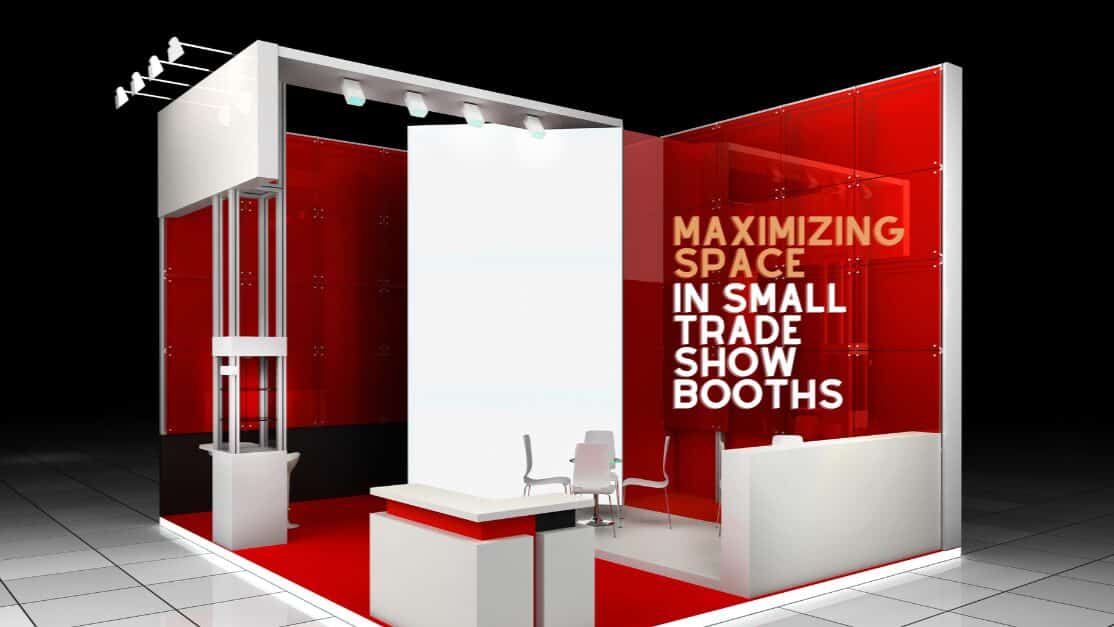Maximizing Space in Small Trade Show Booths

Trade shows offer a fantastic opportunity to showcase your brand, generate leads, and connect with potential customers. However, securing a large booth space can be expensive, especially for businesses with limited budgets. This is where maximizing the potential of a small trade show booth becomes essential. With a strategic approach and creative design, you can make a big impact even in a compact space.
Design and Layout Strategies
The design and layout of your booth are paramount when space is limited. Here are some key strategies to consider:
- Prioritize Objectives: Before designing, define your primary goals for the trade show. It could be brand awareness, lead generation, or product launches. Clearly defined objectives will drive your design choices and help you prioritize elements within the limited space.
- Choose the Right Event: Opt for events that align with your target audience and industry. A well-chosen event with a targeted audience can compensate for a smaller booth size, leading to better engagement and a higher ROI.
- Open Concept Design: An open concept design allows for a smooth traffic flow and makes your booth feel more spacious and inviting. Avoid closed-off spaces or complex layouts that can make your booth feel cramped.
- The 30-40% Open Space Rule:Aim for 30-40% of your booth’s total area to be open space. This allows for comfortable movement within the booth for both visitors and staff.
- Traffic Flow:Consider the expected flow of traffic and design your booth to guide visitors through your display in a natural and engaging way.
Signage Strategies

Signage plays a crucial role in attracting attendees to your booth. Consider these strategies:
- Signage at Various Ranges: Your signage should work at long, medium, and close range. A large sign can draw attendees from across the hall, while a hanging sign can attract those in your aisle. Eye-level signage draws attendees into your booth.
- Strategic Placement: Ensure your signs are facing in the direction that will catch the most eyes. A large sign facing the back of the hall won’t be effective.
Decluttering and Prioritizing
In a small booth, every element needs to serve a purpose. Here’s how to declutter and prioritize:
- Essential Items Only: Include only essential furniture, displays, and promotional materials. Avoid overcrowding your booth with unnecessary items.
- Hidden Storage: Incorporate hidden storage solutions to keep your booth organized and clutter-free. Utilize under-counter storage, shelves with doors, or built-in compartments in furniture.
- Prioritize Key Messages: Focus on communicating your key messages clearly and concisely. Avoid overwhelming visitors with too much information.
- Negative Space: Don’t be afraid to embrace negative space. Blank areas can help highlight important elements and create a more balanced and visually appealing display.
Space-Saving Furniture and Displays
When it comes to furnishing and displaying your products in a small booth, consider these space-saving options:
- Multi-functional Furniture that serves multiple purposes. For example, a counter with built-in storage or seating with compartments for brochures can help you stay organized and maximize space.
- Portable and Lightweight Furniture: These are easy to move and reconfigure as needed. It allows you to adapt to different crowd sizes and situations.
- Tension Fabric Counters: These portable and lightweight counters are easy to move around and can be customized with your branding.
- Modular Display Counters: These counters are a great space-saving choice due to their portability and customizable configurations.
- Vertical Displays: Utilize vertical space to draw attention and free up floor space1. Consider tall banners, shelving units, and hanging displays to showcase your products or branding.
- Tiered Shelving: Use tiered shelves to display products at different heights, maximizing vertical space and creating visual interest.
- “Drop” Elements: Consider using “drop” elements, which are suspended from the ceiling, as an alternative to traditional podiums. These can create striking visuals and free up floor space.
- Digital Displays: Incorporate digital monitors or interactive kiosks to showcase your products or services without taking up valuable physical space.
Utilizing Vertical Space
Don’t forget to make the most of the vertical space in your booth. Here are some ideas:
- Hanging Structures: Install hanging structures to display banners, signage, or product displays above your booth18. This frees up valuable floor space and increases visibility.
- Ceiling Banners: Use ceiling banners to draw attention to your booth from a distance8.
- Varying Heights: Use different heights for wall displays and signage to create visual interest and guide visitors’ eyes upward8.
Conclusion
Maximizing space in a small trade show booth requires careful planning, creative design, and a focus on functionality. By implementing these strategies, you can create a booth that is both visually appealing and effective in achieving your trade show goals.
About Us
We at ExhibitGrow transform ideas into extraordinary experiences, driven by our dedicated team with more than 15 years of experience in the events industry. Our expertise is crafting bespoke exhibition stands that captivate attention, draw crowds, and deliver impactful results. Whether you’re an established global brand or an emerging start-up, our designs ensure your booth becomes one of the highlights of the event.
Send us your design brief at info@exhibitgrow.com or contact our sales team at +971 56 439 7966

Comments are closed.